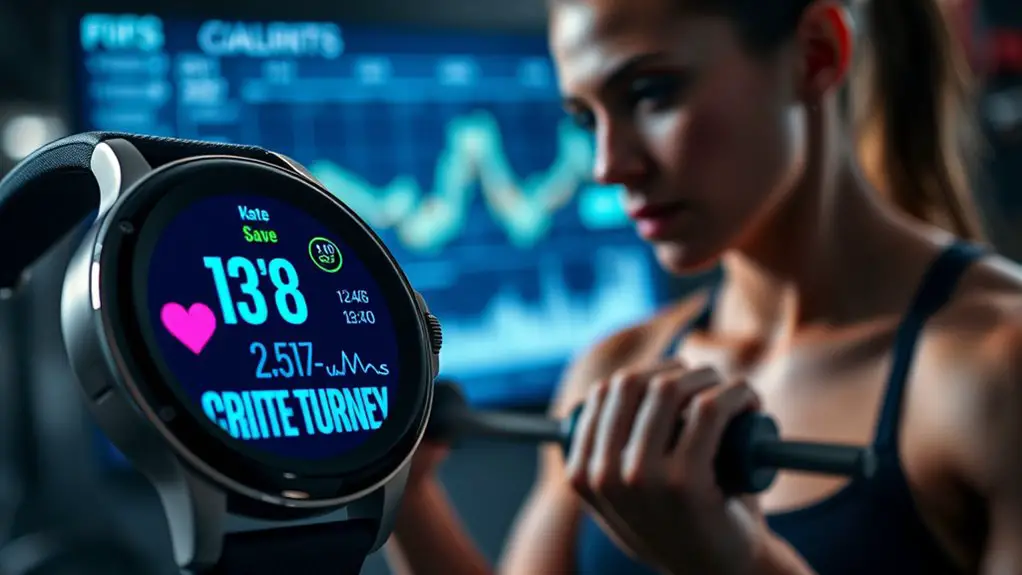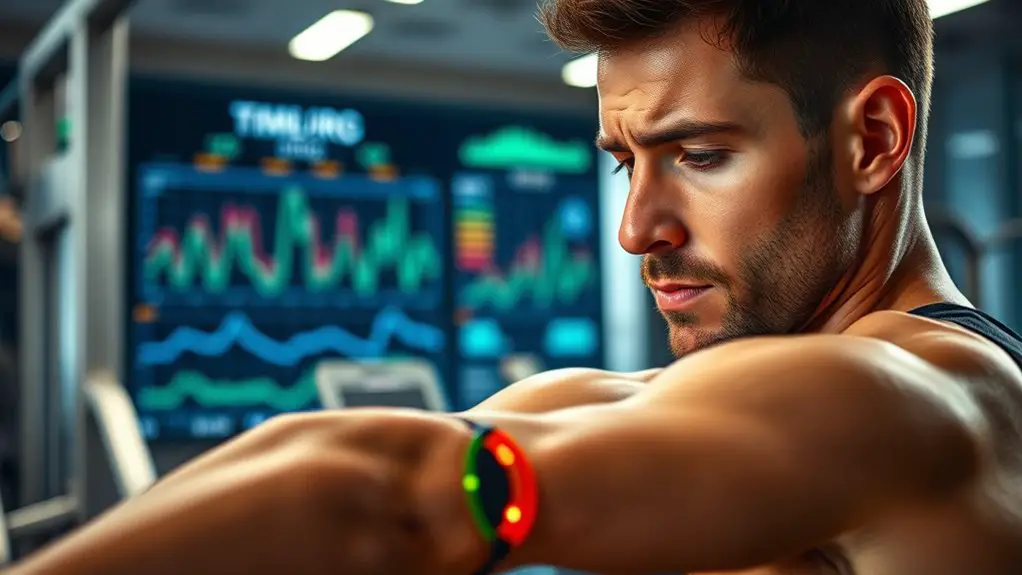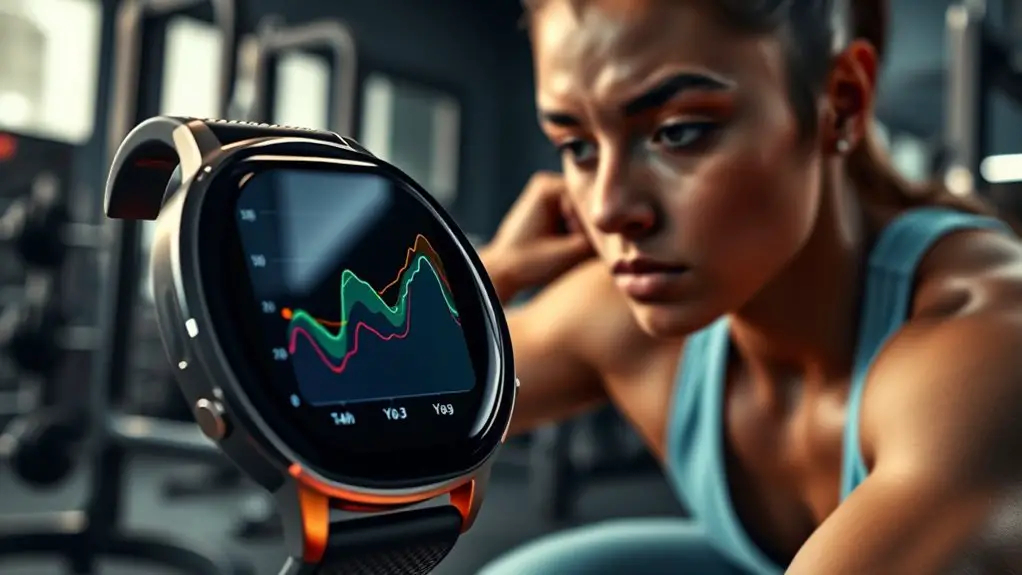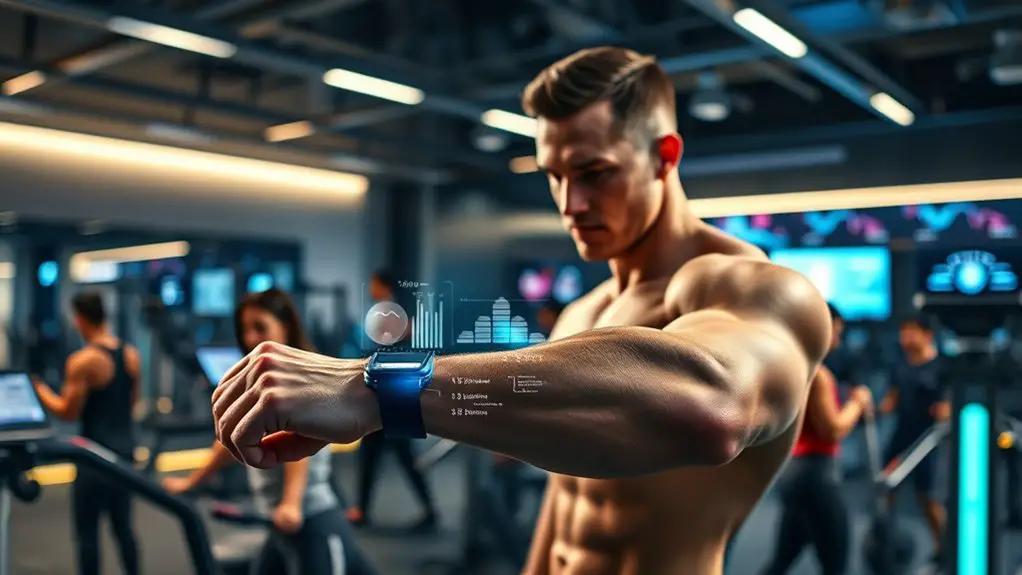How Biometric Data Is Transforming Gym Training

Biometric data is reshaping your gym training experience. With wearables, you’re getting real-time insights that personalize workouts, enhance performance, and help prevent injuries. Tracking metrics like heart rate variability and muscle activity allows you to optimize your routines while ensuring safety. Plus, personalized training programs and immediate feedback keep you motivated and engaged. As technology progresses, you’ll discover even more innovative ways to elevate your fitness journey. Explore how these advancements can transform your workouts.
The Rise of Biometric Technology in Fitness

As technology continues to evolve, it’s no surprise that biometric data has become a game-changer in the fitness industry. You’ve likely noticed the surge in fitness wearables, like smartwatches and heart rate monitors, that track everything from your steps to sleep patterns. These devices collect real-time data, helping you personalize your workouts and optimize performance.
However, with this convenience comes an important concern: data privacy. As you share your biometric information, it’s essential to be aware of how that data is stored and used. Many fitness apps claim to protect your information, but breaches can happen. Understanding the privacy policies of your fitness wearables is critical to safeguarding your personal data.
Understanding Heart Rate Variability
Heart rate variability (HRV) is a fascinating metric that provides insights into your overall health and fitness levels. By analyzing HRV, you can track heart rate trends and understand how your body responds to stress and recovery. Higher HRV often indicates good cardiovascular health and adaptability, while lower HRV can signal fatigue or overtraining.
| HRV Level | Interpretation | Variability Implications |
|---|---|---|
| High | Good recovery and fitness | Better stress resilience |
| Moderate | Average health | Balanced lifestyle needed |
| Low | Potential health issues | Increased risk of fatigue |
Muscle Activity Monitoring: The Role of EMG

When you’re pushing your limits at the gym, understanding muscle activity through EMG technology can be a game changer. It not only helps you monitor the effectiveness of your workouts but also provides insights into your form and technique. By integrating EMG into your training routine, you can optimize performance and minimize injury risk.
Understanding EMG Technology
Electromyography (EMG) serves as a powerful tool for monitoring muscle activity during gym training, providing valuable insights into how your muscles are functioning. By measuring electrical signals produced by muscle contractions, EMG applications can reveal critical information about muscle engagement and coordination. This data helps you understand your performance, particularly when it comes to identifying muscle fatigue. When your muscles start to tire, EMG readings can show decreased electrical activity, indicating it’s time to adjust your workout intensity. By integrating EMG technology into your training regimen, you can better tailor your exercises, enhance your efficiency, and ultimately improve your strength and endurance. Understanding this technology empowers you to make informed decisions for ideal training outcomes.
Benefits of Muscle Monitoring
Muscle monitoring technology, particularly through EMG, offers numerous benefits that can greatly enhance your workout experience. By utilizing this technology, you can achieve better muscle recovery and performance enhancement. Here are three key advantages:
- Targeted Training: EMG helps identify which muscles are activated during your workouts, allowing you to focus on underdeveloped areas.
- Optimal Recovery: By monitoring muscle activity, you can determine when your muscles are fatigued, helping you adjust your training for effective recovery.
- Technique Improvement: Real-time feedback on muscle engagement can lead to better form, reducing the risk of injury and maximizing workout efficiency.
Incorporating EMG technology into your routine not only boosts performance but also supports your long-term fitness goals.
Practical Applications in Training
In the world of fitness, harnessing muscle activity monitoring through EMG can revolutionize how you train. By integrating biometric sensors with fitness apps, you can gain real-time insights into your muscle performance, optimizing your workouts for maximum efficiency.
| Application | Benefits |
|---|---|
| Exercise Form | Improves technique and reduces injury risk |
| Muscle Activation | Identifies underused muscle groups |
| Recovery Monitoring | Tracks fatigue and recovery times |
| Personalized Training | Tailors workouts based on muscle response |
Using EMG data, you can adjust your training strategies to enhance muscle engagement and prevent overtraining. This way, you’re not just working harder; you’re working smarter. Embrace this tech to take your fitness journey to the next level!
Sleep Patterns and Recovery: Key to Performance

Although many athletes focus on training intensity and nutrition, sleep patterns play an equally essential role in recovery and overall performance. By prioritizing sleep optimization, you can enhance your recovery strategies and maximize your training benefits. Here’s how to improve your sleep for better performance:
- Consistent Sleep Schedule: Aim to go to bed and wake up at the same time every day to regulate your body’s internal clock.
- Sleep Environment: Create a dark, cool, and quiet space to promote deeper sleep and minimize disturbances.
- Pre-Sleep Routine: Incorporate relaxing activities, like reading or meditating, to signal your body it’s time to wind down.
Personalized Training Programs Based on Data
Creating a personalized training program based on your biometric data can greatly enhance your workout effectiveness. By tailoring workout regimens to your individual needs and monitoring your performance in real-time, you can make informed adjustments that lead to better results. This approach not only optimizes your training but also keeps you motivated and engaged in your fitness journey. Understanding your daily caloric intake is essential for effective fitness planning, allowing you to adjust your nutrition according to your workout demands.
Tailored Workout Regimens
As you explore the world of gym training, recognizing the significance of tailored workout regimens can transform your fitness journey. With biometric data, you can engage in adaptive training and receive individualized coaching that caters to your unique needs. Here’s how tailored regimens can enhance your experience:
- Customized Workouts: Your program is designed based on your fitness level, goals, and biometrics, ensuring it’s just right for you.
- Progress Tracking: Regular assessments allow adjustments to be made, optimizing your performance and results.
- Motivation Boost: Personalized plans keep you engaged, as you see tangible improvements and stay focused on your fitness objectives.
Embracing tailored regimens not only maximizes efficiency but also makes your fitness journey enjoyable and rewarding.
Real-Time Performance Monitoring
When you harness the power of real-time performance monitoring, you unfasten the potential for a more responsive and effective training program. By utilizing real-time analytics, you can track your performance metrics as they happen, allowing for immediate adjustments to your workouts. This dynamic approach means you won’t just follow a static plan; instead, you’ll adapt based on your body’s responses. If your heart rate spikes or your strength plateaus, you can modify your routine on the spot, optimizing each session for maximum results. This personalized training experience enhances motivation while ensuring you’re always working towards your specific goals. With real-time insights, you’ll not only improve efficiency but also boost your overall fitness journey.
Enhancing Motivation Through Real-Time Feedback

While many gym-goers struggle to stay motivated during workouts, real-time feedback provided by biometric data can greatly enhance their experience. By leveraging this technology, you can receive instant results that keep you engaged and focused. Here’s how real-time feedback can boost your motivation:
Real-time feedback from biometric data transforms workouts, keeping you engaged and motivated with instant results tailored to your performance.
- Personalized Insights: Receive motivational feedback tailored to your performance, helping you understand what works best for you.
- Immediate Adjustments: Make on-the-fly adjustments to your routine, ensuring you’re always challenging yourself and not falling into a monotonous rhythm.
- Goal Tracking: See your progress in real-time, which reinforces your commitment and reminds you of your goals, making every session feel purposeful.
With these elements in play, the once intimidating task of exercising transforms into a dynamic and rewarding experience. Embracing biometric data will not only enhance your workouts but also keep your motivation levels soaring.
The Impact of Data on Injury Prevention
Injury prevention is essential for anyone committed to a consistent gym routine, and leveraging biometric data can greatly reduce your risk. By analyzing your unique physiological metrics, you can identify injury trends specific to your workout habits. For instance, if your heart rate spikes during certain exercises, it could indicate that you’re pushing too hard or using improper form.
Using this data, you can implement targeted prevention strategies, like adjusting your workout intensity or incorporating specific stretches to enhance flexibility. Wearable devices provide real-time feedback, alerting you to potential overexertion or fatigue before they lead to injury. Additionally, being aware of factors such as proper technique can help in minimizing the risk of knee injuries while jumping rope.
Tracking your recovery metrics helps guarantee you’re not returning to the gym too soon after a setback. By proactively using biometric insights, you can minimize downtime, maintain your progress, and stay committed to your fitness goals. Embracing this data-centric approach leads to safer, more effective training experiences.
The Future of Biometric Data in Fitness Training

As the fitness landscape continues to evolve, the role of biometric data is set to expand considerably. You’ll likely see advancements in wearable devices that not only track your heart rate and steps but also offer deeper insights into your overall health. Here are three trends shaping the future of biometric data in fitness training:
- Real-Time Analytics: Wearable devices will provide instant feedback, allowing you to make immediate adjustments to your workouts.
- Personalized Training Plans: Algorithms will analyze your data to create customized training regimens tailored to your specific goals and performance levels.
- Enhanced Data Privacy: As concerns about data privacy rise, expect stricter regulations and improved security measures to protect your personal information.
Embracing these innovations can elevate your fitness journey while ensuring your data remains secure. The future is bright, and it’s time to get ready for what’s next!
Frequently Asked Questions
How Secure Is My Biometric Data in Fitness Applications?
When it comes to the security of your biometric data in fitness applications, it’s essential to take into account data encryption and privacy regulations. Most reputable apps use strong encryption methods to protect your personal information. However, not all apps are created equal, and some may not comply with strict privacy regulations. Always research the app’s security measures and make certain it adheres to recognized standards, so you can feel confident your data is safe.
Can Biometric Data Track My Progress Over Time Effectively?
Imagine your fitness journey as a tapestry, woven with threads of progress tracking. Biometric data acts as the vibrant colors that illuminate your path. With precise data accuracy, you can monitor changes in your body and performance over time, revealing how hard work pays off. By consistently analyzing this data, you’ll not only see improvements but also stay motivated, transforming your efforts into a vivid picture of success. Your fitness story unfolds, one metric at a time.
What Types of Devices Collect Biometric Data for Gym Training?
When it comes to collecting biometric data for gym training, wearable technology plays a vital role. Devices like fitness trackers and smartwatches come equipped with biometric sensors that monitor heart rate, calories burned, and even sleep patterns. These gadgets help you gain insights into your performance and recovery. By integrating this data into your training regimen, you can create a more personalized and effective workout experience that aligns with your fitness goals.
Are There Privacy Concerns Regarding Sharing Biometric Data With Trainers?
When sharing biometric data with trainers, you should definitely consider privacy concerns. Data ownership is key; you need to be clear about who owns the information and how it’s used. Consent policies are equally important; make sure you understand what you’re agreeing to. It’s crucial to guarantee that your data isn’t misused or shared without your permission, so always ask questions and read the fine print before you share.
How Can I Interpret My Biometric Data for Better Training Outcomes?
To interpret your biometric data effectively, focus on data accuracy to guarantee you’re tracking reliable metrics. Look at heart rate, calories burned, and recovery times to identify patterns. By analyzing this information, you can optimize your training by adjusting intensity or duration based on your body’s responses. Don’t ignore trends over time; they can reveal your progress and areas needing improvement, helping you tailor your workouts for better outcomes.





